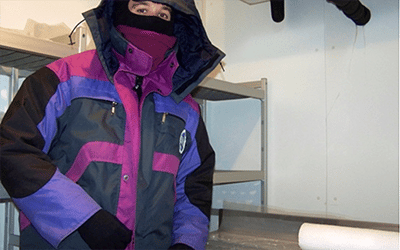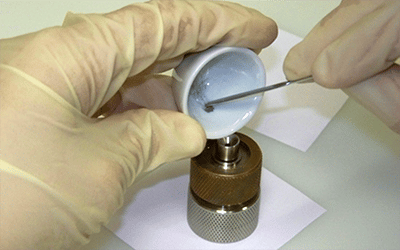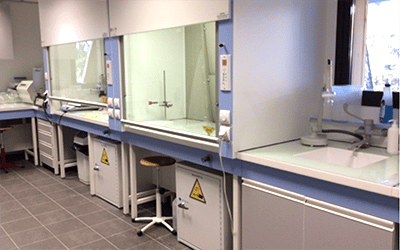Tools of the Polar Ice Geochemistry Unit



Preparation laboratory
All of CEREGE's ice samples are stored in a cold store near the laboratory. Samples required for a chemical preparation campaign are transported from the cold store to the 6 m2 negative temperature cold room installed in the glaciology laboratory. The ice samples are then cut up in the cold room with a saw and melted at room temperature in the laboratory.
The chemical preparation consists of extracting all the beryllium-10 (10Be) or chlorine-36 (36Cl) present in the samples. To do this, a known mass of the stable isotopes of beryllium-9 or chlorine-35 is added. The objective is twofold, since this allows the 10Be and 36Cl present in the sample to be drawn off, but also to fix the isotopic ratios 10Be/9Be and 36Cl/35Cl. We use the principle of isotope dilution to calculate the chloride concentration of the sample that is required to optimally interpret the 36Cl data (Braucher et al., 2018, Pivot et al., 2019). The extraction of 10Be and 36Cl is done through a succession of acid-base reactions, and pyrolysis in the case of 10Be, to obtain compounds in solid form, beryllium oxide (BeO) and silver chloride (AgCl).
These solids are then pelleted into a target which is placed in one of the two sources (Element 3 of the Equipex ASTER-CEREGE) of the Accelerator Mass Spectrometer, ASTER, the national instrument installed at CEREGE.

